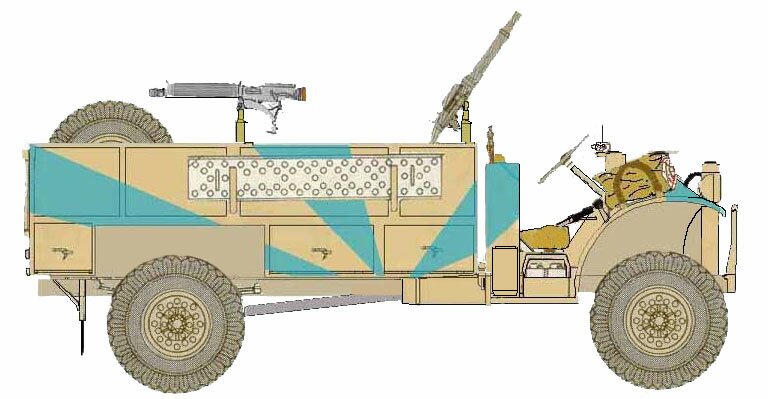
30 CWT Ford F30 / 30 CWT Chevrolet 1533X2
It seems unlikely that an organization devoted to long treks in the desert would choose a two wheel drive vehicle over a four wheel drive vehicle. What did the Chevrolet 1533X2 offer that the the Ford F30 did not? Both were 30 CWT vehicles meaning they had a payload of approximately 3000 pounds of 1 ½ tons. The Ford had a wheel base of 134 ¼ inches and the Chevrolet 134 inches. The Chevrolet sported a 6 cylinder in-line engine, the Ford a flatheadV8. The Frod engine was rated at a higher horsepower. On paper, it seems that the Ford, with its four wheel drive capability should have an edge over the Chevrolet, that is until you look at gas milage.
Chevrolet 1533x2 fuel consumption
Gas milage played a crucial part in deciding to use the 4X2 Chevy over the 4X4 Ford, primarily because of the additional weight and space used up by the fuel. When you consider a gallon of petrol weighs approximately six pounds, you begin to see how critical fuel consumption was, when operating over vast distances.
For instance, The Ford F30 had four wheel drive. It was a very capable machine and was less likely to get stuck in the sand. However it managed only 6 MPG.
Ford F30 pros and cons
If a patrol was going to cover 600 miles (something that was not uncommon) The Ford would need 100 gallons of petrol. Normal fuel capacity was by two 12 ½ gallon tanks. This meant the additional 75 gallons would be carried in 15 jerry cans, adding 450 pounds to the payload. Besides the weight, 15 jerry cans would also take up valuable space.
The Chevrolet, on the other hand, managed about 12 MPG. The standard gas tank held 20 gallons. At twelve miles to the gallon, the Chevrolet would need only 50 gallons for the same 600 mile patrol. This means the Chevrolet would need to carry only an additional 30 gallons or 6 cans of petrol. The 30 gallons of petrol would only increase the payload by 180 pounds instead of 450 pounds.
While Patrol trucks carried extra fuel, it was also common for the fitters vehicle to carry fuel. According to Jack Valenti of the LRDG Preservation Society it was not uncommon for the Fitters to carry around 30 jerry cans, or 150 gallons of fuel. 150 gallons equals approximately 900 pounds of fuel. That was enough fuel to get a Ford F30, about 900 miles, or Chevrolet 1533X2 about 1800 miles.
While not completely verified, some sources claim that the F30 were not as mechanically sound as the Chevrolet 1533X2 Apparently there were problems with the complexity of the 4WD system. While the Ford V8 produced more horsepower than the Chevrolet 6 cylinder, the F30 remained underpowered due to the power to weight ratio compared to the Chevrolet.
The higher fuel consumption, also meant that patrols would need to be resupplied more often or they would need to run shorter patrols. Resupplying a patrol is a security risk. In the end, these considerations led to the adoption of the Chevrolet 1533X2 over the Ford F30.
Still the LRDG liked the F30's four wheel drive capability. They continued to be used until the end of the Africa Campaign, filling in for Chevrolets when needed due to break downs or vehicle shortages.

30 CWT Ford F30

30 CWT Chevrolet 1533X2
